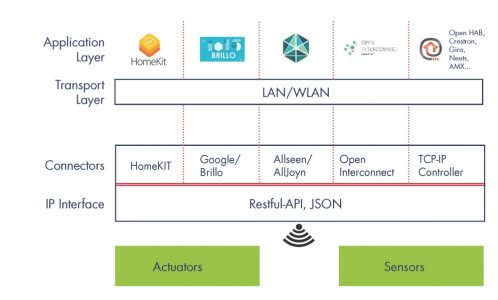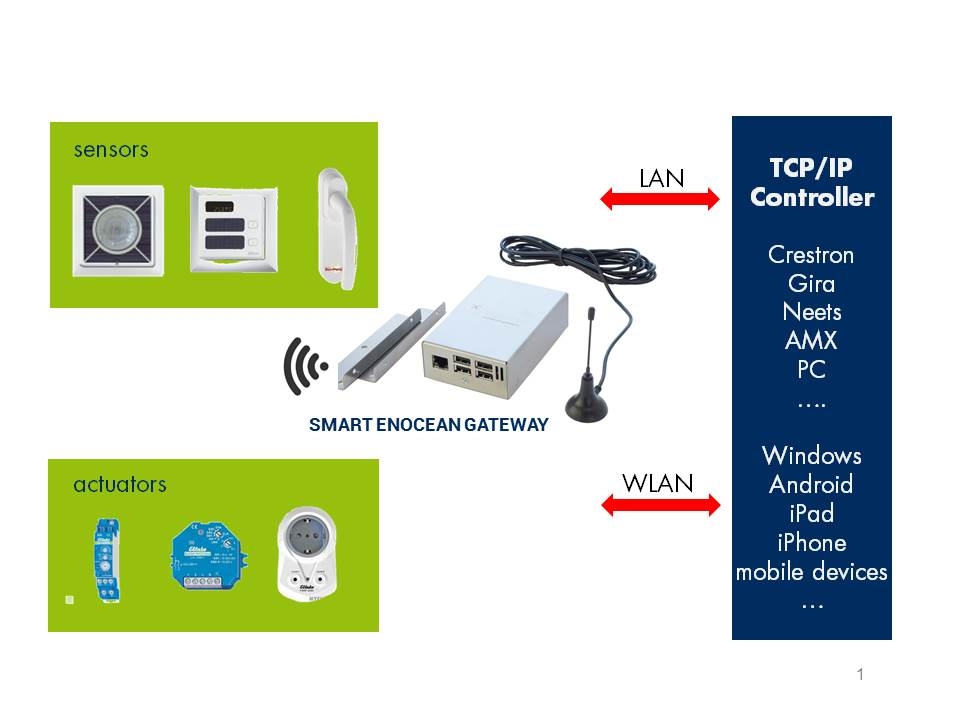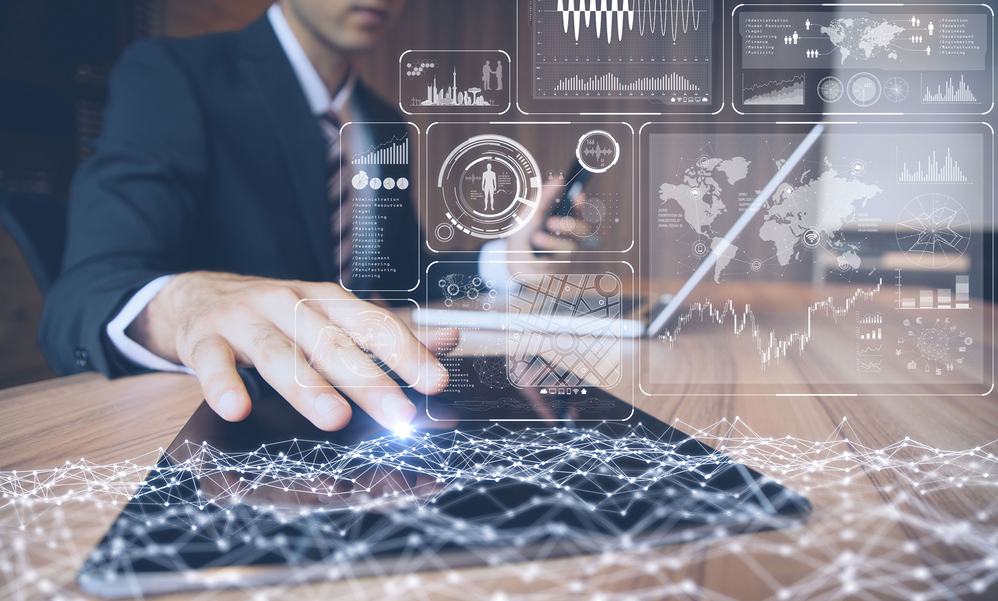EnOcean to IP – we’re off to the Internet of Things
Issue :
read all articles online
read as pdf
The Internet of Things (IoT) is gradually taking shape. The technologies are moving toward a comprehensive network that will make our everyday lives easier, safer and more comfortable. Energy harvesting switches, sensors and actuators that supply necessary information for the IoT from billions of measuring points form an important element of this development. To do this, the EnOcean wireless technology must communicate with the Internet Protocol.
All it takes is a flip of the energy harvesting wireless switch and the smart refrigerator starts the freezer turbo. Minutes later, the apple juice is cold. At the press of a button – even from the sofa. This is only one example of a new application made possible by seamless communication between different standards. In other scenarios, IP-enabled cameras are networked with energy harvesting sensors, the water sensor talks to the washing machine or the inlet valve and the house organizes its own optimum energy consumption according to the residents’ requirements.

A unified IP Interface creates the link to different IoT platforms.
Interoperable network
These scenarios are all possible if the EnOcean protocol (ISO/IEC 14543-3-1X) seamlessly talks to the IP protocol via a gateway. This communication, in turn, forms the basis for integrating the data of energy harvesting wireless sensors into cross-standard, open platforms. The result is a fully interoperable network in which, once collected, the data can be used to intelligently control different devices independently of the technology used, the wireless system or the manufacturer.

A gateway connects energy harvesting wireless sensors and actuators to the Internet.
Translating EEP into IP
In terms of its technical implementation, a system of this type requires an IP interface that consistently translates the represented EnOcean equipment profiles (EEPs) for the IP side. To do this, the content specified in the EnOcean profiles must be prepared in such a way that the user on the IP side needs little or even no knowledge of the EnOcean protocol in order to operate the particular devices. This is how the “things” on the Internet of Things can be represented. The Representational State Transfer method (REST or RESTful) has proven to be particularly useful here.
However, not all systems can address a RESTful API and therefore require an alternative notation. For this purpose, a second API is provided, which dispenses with hierarchical structures. A line-based API, whose communication is based purely on the TCP layer, maps the full range of “RESTful API” functions. This so-called “string API” allows programmable logic controllers, for example, to be integrated.
Consistent communication
The IP representation of all EnOcean telegrams and functions must be standard. This means that the syntax of an IP specification must always be mapped the same way across all EEPs. In addition, the EnOcean gateway must be able to provide the states of all devices and also deliver them on request. In particular, it must represent and store the different states of the EnOcean profiles individually.
The gateway also ensures that the translations of IP calls in EnOcean telegrams are always complete and unique. As a result, IP-based devices can directly address individual values and functions of a sensor.
Talking API
To ensure smooth communication between the EEP and IP, dependencies must also be resolved and related profile functions aggregated and supplied centrally. The gateway also resolves the coding of functions in such a way that IP-based devices do not have to know this coding.
All these specifications mean that the gateway can deliver the communication structure of all EnOcean-based devices (EEPs) to the IP subscribers on request. It thus meets the need to represent the EnOcean-based devices in a “friendly” manner so that they can be more easily implemented in the IoT network.
New articles in Smart Spaces
Top articles





